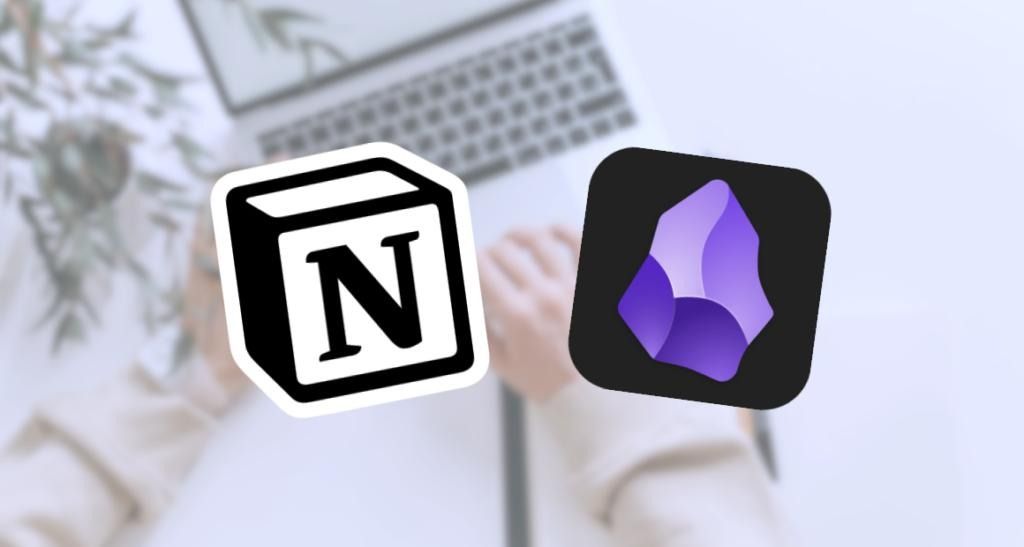

Notion vs Obsidian: two powerful note-taking apps vying for students’ attention. Let’s learn more about this topic below with Slice Master, as we dive deep into their features, pros, and cons to help you make an informed decision.
In today’s digital age, effective note-taking has become an essential skill for students across all levels of education. With the rise of technology, traditional pen-and-paper methods are gradually being replaced by digital alternatives that offer more flexibility, organization, and accessibility. Two popular contenders in this space are Notion and Obsidian, both of which have gained significant traction among students and professionals alike. In this comprehensive comparison, we’ll explore the strengths and weaknesses of each platform, helping you determine which one might be the best fit for your academic needs.
Notion is often described as an all-in-one workspace that combines note-taking, project management, and collaboration tools into a single platform. It’s designed to be versatile and adaptable, catering to a wide range of use cases beyond just note-taking. Let’s delve into some of its key features and benefits for students.
One of Notion’s standout features is its flexibility. Users can create custom databases, kanban boards, calendars, and wikis, all within the same interface. This makes it an excellent choice for students who need to manage various aspects of their academic life, from lecture notes to project timelines and reading lists.
The platform’s block-based structure allows for easy organization and rearrangement of content. Students can drag and drop elements, embed multimedia files, and create nested pages to structure their notes hierarchically. This flexibility enables users to create personalized systems that suit their unique learning styles and preferences.
Collaboration is another strong suit of Notion. Students can easily share pages or entire workspaces with classmates, making it ideal for group projects and study sessions. Real-time editing and commenting features facilitate seamless teamwork, even when working remotely.
Notion also offers a wide range of templates, saving students time in setting up their workspaces. From simple note-taking layouts to comprehensive study planners, these templates provide a solid starting point that can be customized to fit individual needs.
However, Notion’s versatility can also be a double-edged sword. Some users find the platform’s extensive features overwhelming, especially when first starting out. The learning curve can be steep, potentially distracting students from their primary goal of taking and organizing notes efficiently.
Another potential drawback is Notion’s reliance on an internet connection for full functionality. While offline mode is available, it’s limited compared to the online experience. This could be problematic for students who frequently work in areas with poor connectivity.
Obsidian takes a different approach to note-taking, positioning itself as a powerful knowledge base built on local Markdown files. This focus on simplicity and user control sets it apart from more complex platforms like Notion. Let’s examine what Obsidian brings to the table for students.
At its core, Obsidian is designed around the concept of linking thoughts and ideas. It encourages users to create connections between notes, forming a web of knowledge that mimics the way our brains naturally process information. This approach can be particularly beneficial for students engaged in research or complex subject areas.
One of Obsidian’s key strengths is its use of local storage. All notes are saved as plain text Markdown files on the user’s device, ensuring complete ownership and control over data. This local-first approach also means that Obsidian works seamlessly offline, a significant advantage for students who may not always have reliable internet access.
The platform’s plugin system allows for extensive customization and feature expansion. Students can tailor their Obsidian experience by installing community-created plugins that add functionality like spaced repetition, mind mapping, or advanced search capabilities.
Obsidian’s focus on Markdown syntax makes it particularly appealing to students in technical fields or those who appreciate a more code-like approach to note-taking. The simple formatting allows for quick note creation without the need for complex formatting tools.
However, Obsidian’s strengths can also present challenges for some users. The lack of a structured database system might make it less suitable for students who need to manage complex projects or collaborative tasks. While plugins can add some of this functionality, it may not be as seamless as Notion’s built-in features.
Additionally, the emphasis on linking and building a knowledge graph can be overwhelming for students who prefer a more straightforward, linear approach to note-taking. Some may find the concept of bidirectional linking and graph views unnecessary for their needs.
Now that we’ve explored the general characteristics of both Notion and Obsidian, let’s dive deeper into specific features that are particularly relevant for students. This comparison will help you understand which platform might better suit your academic needs.
Notion excels in providing a flexible structure for note organization. Its nested pages and databases allow students to create complex hierarchies and categorize information in multiple ways. This can be particularly useful for managing notes across different subjects or courses.
Obsidian, on the other hand, relies more on a flat file structure with powerful linking capabilities. While it may seem less organized at first glance, the ability to create links between notes can lead to a more organic and interconnected knowledge base.
For students who prefer a more traditional folder-like structure, Notion might feel more intuitive. However, those who enjoy discovering unexpected connections between ideas may find Obsidian’s approach more stimulating and conducive to creative thinking.
Both Notion and Obsidian offer robust search capabilities, but they approach this feature differently. Notion’s global search function allows users to quickly find information across all pages and databases within a workspace. Its filters and sorting options in databases can be particularly helpful for managing large amounts of structured data.
Obsidian’s search is equally powerful, with the added benefit of working entirely offline. Its graph view provides a unique way to visualize connections between notes, which can be invaluable for students working on complex research projects or trying to understand relationships between different concepts.
The choice between the two may come down to personal preference and the type of content being managed. Notion’s search might be more suitable for structured data, while Obsidian’s could be better for free-form notes and ideas.
For group projects and collaborative study sessions, Notion has a clear advantage. Its built-in sharing features allow students to easily collaborate on documents in real-time, assign tasks, and comment on each other’s work. The ability to create team workspaces makes it an excellent choice for long-term group collaborations.
Obsidian, being primarily a local-first tool, doesn’t offer native collaboration features. While it’s possible to use version control systems like Git for collaboration, this approach requires more technical knowledge and setup. For students who primarily work independently, this limitation may not be an issue.
If collaboration is a key requirement for your studies, Notion would be the more suitable choice. However, if you value privacy and don’t need extensive collaboration features, Obsidian’s local-first approach might be preferable.
In today’s mobile-centric world, the ability to access and edit notes on-the-go is crucial for many students. Both Notion and Obsidian offer mobile apps, but their functionality differs significantly.
Notion’s mobile app provides a nearly full-featured experience, allowing students to access and edit their notes, databases, and other content from their smartphones or tablets. The synchronization between devices is seamless, ensuring that you always have access to the latest version of your notes.
Obsidian’s mobile app, while functional, is somewhat more limited compared to its desktop counterpart. However, it still allows for note creation, editing, and browsing of your vault. The local-first nature of Obsidian means that syncing between devices requires a third-party solution, which some users might find less convenient.
For students who frequently need to review or edit notes on their mobile devices, Notion’s more robust mobile experience might be the better choice. However, if mobile use is secondary to desktop work, Obsidian’s offering may be sufficient.